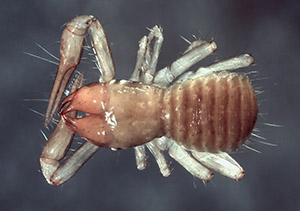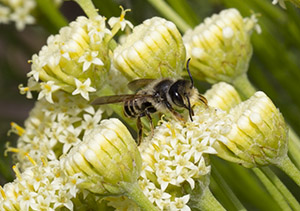
We are surveying variation in groups of pseudoscorpions that are endemic to the Pacific Northwest. These tiny leaf-litter dwelling arachnids show high degrees of genetic differentiation among geographic regions, despite low levels of morphological divergence.

Despite the increased understanding that native bees provide important pollination services, it is not known what species, or how many species, of native bees live in Portland, the largest urban center in Oregon. Since 2017 we have been surveying three main regions of Portland in order to determine what bees are present and what flowers they use. Every two weeks we have been hand-netting bees and recording the flowers they are visiting, followed by bringing the bees back to PSU’s Museum of Natural History and identifying them. Our goals are to create a list of bees present in our urban landscape, to gain an understanding of seasonality for each bee species, and to use our floral data to recommend plants that will be most effective for attracting various species of bees throughout the seasons.

About one-third of our native bees nest in cavities, such as holes made by beetles in dead wood. However, in urbanized areas such as Portland, dead woody material that would provide nesting habitat for bees is often removed by people for aesthetic reasons. As a result, it has become popular to put out artificial cavity nests for bees. However, there has been minimal research into what preferences bees have for such structures. We seek to determine which, if any, of our native bee species show preferences for nesting at particular heights. As a part of this study, we will also document what cavity-nesting wasps are present in the region and using these structures.
